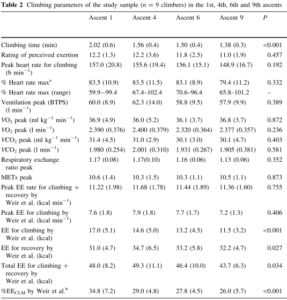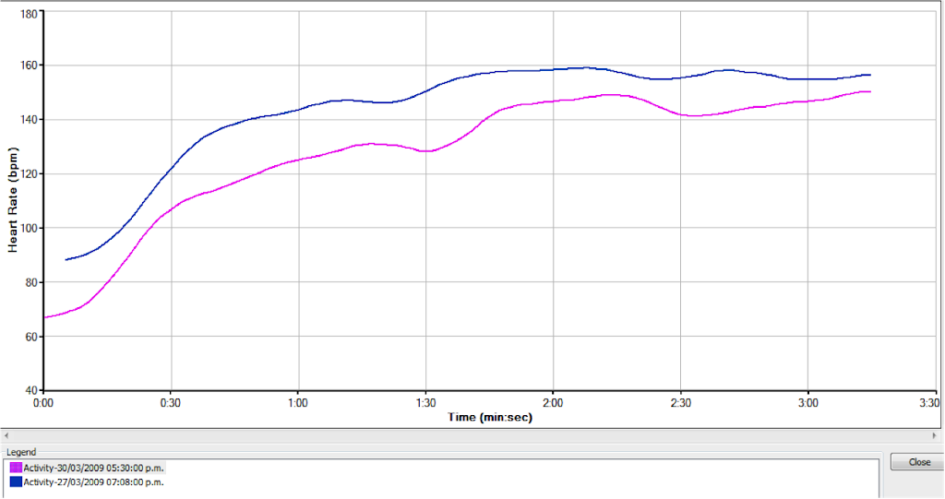So far, training can be strictly planned, but measuring the intensity that poses a route is not so easy, and worse in climbing, an sport dominated by complex technical gestures. Repeating a route and technically perfect their movements (those little subtleties that make movements easier), decreases the intrinsic intensity of the route, and therefore the athlete is not training with an homogeneous intensity over the sets and reps.
An example of this can be seen in the following graph heart rate, where a climber climbed the same route, on different days.
Here we take heart rate as a value that indicates the effort intensity on the climber’s body (can also include psychological aspects) and not as an difficulty index of the route.
Fortunately, since early this year, Vanessa España Romero et cols, published a very interesting study in the Euopean Journal of Applied Physiology (1). They evaluated 9 experienced climbers in the same same route in a number of physiological parameters. The study consisted of climbing a 35 moves 6a (5.10) route in 9 opportunities, separate them by 1 week. The climbers were allowed to continue their usual training, but they could only climb the route in the instances provided for evaluation.
The researchers compared the first, fourth and ninth attempt. The results are detailed in the table below.

And the latter is very important to keep in mind when prescribing exercise. In climbing there are constant technical adjustments that makes that the different intensities are related to the degree of processing each individual gesture (movement) of the route, which makes the intensity varies over the time if the athlete trains on the same route. Following are some recommendations to keep in mind when prescribing climbing endurance sets/:
-design new routes for each training session, this does not give time to the climber to fits technically to the route
-Using previously known routes, where there is no possibility of technical improvement, which will definitely be a greater difficulty than those proposed above.
– Monitoring the execution time of each route, that is not reduced sharply, thus losing the desired intensity of the effort to produce the corresponding adaptations.
What we must not do is to use the same route several sessions, so the intensity will be decreasing as the technique is suited to the route, and therefore the training stimulus will be of lower quality.



Leave a Reply